#review of basic fundamentals
Explore tagged Tumblr posts
Text
And then along comes this noise. All day long, this relentless noise.
OH YEAH AND HOW DOES THAT FEEL, DOCTOR????

#i've said it before and i'll say it again#the drums are a metaphor of a more emotionally-intellectual negative drive0#than either a purely external torture or an auditory hallucination#so yeah#anyway read a negative review of tld and i thinj the fundamental difference#between the chibnall and davies writing is that the latter makes sure to throw a grain of narrative salt into the superficial reading#yes the doctor went on a rant at conrad - and? then? the? story? proved? him? wrong?#yes alan in an internet misogynist - and? has? to? go? under? machine's? radar? that? he? wants? out????#compared to kerblam where you have to see just how much mixed up the objects of criticism are0#to even consider there's something wrong... yeah#basically rtd never crosses the preaching line for me#dw spoilers#lucky day#doctor who#fifteenth doctor#simm!master#the master#rtd
49 notes
·
View notes
Text
"Claire Cao was only a senior in high school when she saw a vital need in her community — and filled it.
In 2024, the teenager spent her time outside of school volunteering at Blanchet House, a Portland-based nonprofit that serves people experiencing homelessness through food donations, clothing drives, and mental health assistance programs.
As she logged hours as a Blanchet House student ambassador, Cao soon realized how difficult it was for community members to keep track of shelter openings, rotating food service programs, and available mental health resources.
“During one afternoon meal service, I met Dano, an unhoused man who shared his struggles with accessing basic services like food and shelter,” Cao said in a recent press release.
“Left disconnected from essential services, Dano described his struggles of not knowing where to go or which shelters had available beds.”
Combining her love for technology, law, and public policy, Cao pulled available resources into a database and created the ShelterBridge app, which connects users to shelters and services in their area.
“ShelterBridge wasn’t simply inspired by Dano — it was inspired by the realization that access to resources is a fundamental need that we, as a community, can do a better job of providing,” Cao emphasized.
“I wanted to use my skills to build something that could bridge that gap, ensuring that no one falls through the cracks simply because they don’t know where to turn for help.”
In addition to linking users to services in their area, the app also has a rating system similar to Yelp. This system allows people to leave star ratings and reviews on shelters, food services, hotlines, and legal aid.
The ratings not only help users differentiate between services in their area — but they also provide invaluable feedback to the nonprofits, organizations, and government programs that service them.
“We've been asking for an app like this for a number of years now,” Scott Kerman, executive director of Blanchet House, told Portland news station KGW.
In mid-January, Cao won the 2024 Congressional App Challenge in Oregon’s First District for her work with ShelterBridge — outcompeting 12,682 student submissions.
Since the app first launched, Cao and her growing ShelterBridge team — which includes enterprising high schoolers and college students from across the nation — have expanded services to California, Philadelphia, Seattle, Los Angeles, and North Carolina.

“Claire and the team she’s working with deserve all the credit in the world because they're doing something that frankly nobody else has really stepped up to do,” Kerman said.
“To have the kind of technology that we use every day with hotels and other kinds of reservations [to] help people get into safe, supportive and dignified shelter would be a game changer for our community.”
Although the app started as a class project, Cao said ShelterBridge’s success has far surpassed her expectations.
“I do hope to keep it up,” she told Oregon outlet KOIN 6 News, as she looked ahead to college and beyond. “I’ve made a lot of efforts to expand it to other cities as well — and it’s something I can mostly do from a computer or my laptop at home.”
-via GoodGoodGood, March 21, 2025
#homeless#homelessness#community care#poverty#unhoused#housing crisis#housing#shelter#homeless shelter#mental health resources#portland#oregon#california#los angeles#philadelphia#seattle#north carolina#good news#hope
10K notes
·
View notes
Text

I've seen a number of people worried and concerned about this language on Ao3s current "agree to these terms of service" page. The short version is:
Don't worry. This isn't anything bad. Checking that box just means you forgive them for being US American.
Long version: This text makes perfect sense if you're familiar with the issues around GDPR and in particular the uncertainty about Privacy Shield and SCCs after Schrems II. But I suspect most people aren't, so let's get into it, with the caveat that this is a Eurocentric (and in particular EU centric) view of this.
The basic outline is that Europeans in the EU have a right to privacy under the EU's General Data Protection Regulation (GDPR), an EU directive (let's simplify things and call it an EU law) that regulates how various entities, including companies and the government, may acquire, store and process data about you.
The list of what counts as data about you is enormous. It includes things like your name and birthday, but also your email address, your computers IP address, user names, whatever. If an advertiser could want it, it's on the list.
The general rule is that they can't, unless you give explicit permission, or it's for one of a number of enumerated reasons (not all of which are as clear as would be desirable, but that's another topic). You have a right to request a copy of the data, you have a right to force them to delete their data and so on. It's not quite on the level of constitutional rights, but it is a pretty big deal.
In contrast, the US, home of most of the world's internet companies, has no such right at a federal level. If someone has your data, it is fundamentally theirs. American police, FBI, CIA and so on also have far more rights to request your data than the ones in Europe.
So how can an American website provide services to persons in the EU? Well… Honestly, there's an argument to be made that they can't.
US websites can promise in their terms and conditions that they will keep your data as safe as a European site would. In fact, they have to, unless they start specifically excluding Europeans. The EU even provides Standard Contract Clauses (SCCs) that they can use for this.
However, e.g. Facebook's T&Cs can't bind the US government. Facebook can't promise that it'll keep your data as secure as it is in the EU even if they wanted to (which they absolutely don't), because the US government can get to it easily, and EU citizens can't even sue the US government over it.
Despite the importance that US companies have in Europe, this is not a theoretical concern at all. There have been two successive international agreements between the US and the EU about this, and both were struck down by the EU court as being in violation of EU law, in the Schrems I and Schrems II decisions (named after Max Schrems, an Austrian privacy activist who sued in both cases).
A third international agreement is currently being prepared, and in the meantime the previous agreement (known as "Privacy Shield") remains tentatively in place. The problem is that the US government does not want to offer EU citizens equivalent protection as they have under EU law; they don't even want to offer US citizens these protections. They just love spying on foreigners too much. The previous agreements tried to hide that under flowery language, but couldn't actually solve it. It's unclear and in my opinion unlikely that they'll manage to get a version that survives judicial review this time. Max Schrems is waiting.
So what is a site like Ao3 to do? They're arguably not part of the problem, Max Schrems keeps suing Meta, not the OTW, but they are subject to the rules because they process stuff like your email address.
Their solution is this checkbox. You agree that they can process your data even though they're in the US, and they can't guarantee you that the US government won't spy on you in ways that would be illegal for the government of e.g. Belgium. Is that legal under EU law? …probably as legal as fan fiction in general, I suppose, which is to say let's hope nobody sues to try and find out.
But what's important is that nothing changed, just the language. Ao3 has always stored your user name and email address on servers in the US, subject to whatever the FBI, CIA, NSA and FRA may want to do it. They're just making it more clear now.
10K notes
·
View notes
Text
Why Pursuing an MBA in IT Project Management Can Transform Your Career
In the ever-evolving landscape of technology and business, the role of IT project managers has become increasingly critical. If you're looking to advance your career and enhance your expertise in managing complex IT projects, an MBA in IT Project Management could be the key to unlocking new opportunities. Here’s why pursuing this specialized MBA can be a transformative decision for your career.
1. Specialized Knowledge in IT Project Management
An MBA in IT Project Management offers specialized knowledge that bridges the gap between business management and technology. The program covers essential topics such as project planning, risk management, and resource allocation, tailored specifically for IT projects. You’ll gain insights into managing the complexities of IT systems, software development, and technological innovations, equipping you with the skills needed to lead successful IT projects.
2. Enhanced Career Prospects
The demand for skilled IT project managers continues to grow as organizations seek professionals who can effectively manage technology-driven projects. An MBA in IT Project Management positions you for advanced roles such as IT Project Manager, IT Consultant, and Chief Information Officer (CIO). With this degree, you demonstrate a high level of expertise and commitment, making you a competitive candidate for senior management positions and specialized IT roles.
3. Practical Skills for Real-World Challenges
The MBA program in IT Project Management is designed to provide practical skills that are directly applicable to real-world challenges. Through case studies, simulations, and hands-on projects, you’ll learn how to handle complex IT projects from initiation to completion. This practical approach ensures that you’re prepared to tackle real-world issues and drive successful project outcomes in your professional role.
4. Integration of Business and Technology
One of the unique aspects of an MBA in IT Project Management is its focus on integrating business strategies with technology. You’ll learn how to align IT projects with organizational goals, manage budgets, and communicate effectively with stakeholders. This integration is crucial for ensuring that IT projects deliver value and contribute to the overall success of the organization.
5. Networking and Professional Development
Pursuing an MBA in IT Project Management provides valuable networking opportunities. You’ll connect with fellow students, faculty members, and industry professionals, expanding your professional network. These connections can lead to collaborations, mentorship opportunities, and insights into industry trends. Networking within the program can be instrumental for career growth and development.
6. Flexibility and Online Options
Many MBA programs in IT Project Management offer flexible study options, including online formats. This flexibility allows you to balance your education with work and personal commitments. Online programs provide access to the same high-quality education as on-campus programs, with the added benefit of being able to study from anywhere and at your own pace.
7. Choosing the Right Program
When selecting an MBA in IT Project Management, consider factors such as program accreditation, faculty expertise, and the curriculum's alignment with your career goals. Look for programs that offer comprehensive support services, including career counseling and networking opportunities. Choosing a reputable program will ensure that you receive a high-quality education and achieve your professional objectives.
Conclusion
An MBA in IT Project Management can be a game-changer for your career, offering specialized knowledge, practical skills, and enhanced career prospects. At Zoctech, our MBA program in IT Project Management is designed to provide you with the education and support needed to excel in the technology-driven business world. Explore the benefits of our MBA program and take the next step toward achieving your career aspirations.
For more information about our MBA in IT Project Management program, visit Zoctech’s MBA in Project Management.
#project management#project manager#project management career#project management 101#project management basics#project management tutorial#project management fundamentals#mba in project management scope#mba in project management review#mba in project management colleges#mba in project management highest salary#getting a project management job#career in project management#project management skills#what is project management#project management professional
0 notes
Text
It's an ethics AND a safety issue. Trump is planning to stop crash/safety reporting Musk's cars.
A more graphic explanation of why we need to monitor this. (Shows crashed cars, but not the bodies). It's from that time Tesla did deadly beta testing that killed and injured a bunch of people.
Some of these are mostly focused on the national security implications of Musk, SpaceX, and Starlink, but the conflict of interest over things like Self driving cars matter too. It's a fundamental problem that Trump is basically letting Elon Musk make so many decisions for his own benefit.
#Elizabeth Warren#Donald Trump#Elon Musk#Ethics#conflicts of interest#Security Clearance#Tesla#Autopilot#safety#billionaires#1%#Space X#Starlink#National Security
1K notes
·
View notes
Note
hey what DO you watch on youtube? seems like you'd have some neat recommendations :3
i really loathe the like super-highly edited sound effect post-mrbeast slop most of youtube is now so i mostly like stuff that's like... calm and sedate. stuff i've been watching lately in no particular order:
northernlion vods and clips. he's an OG. i especially like his react court series, i must have watched all of them like five times.
speaking of OGs i've been watching zero puncutation (now fully ramblomatic) for like ten years and if anything it's only gotten better. best game review content on the internet. been really enjoying his more recent, slightly longer and more thoughtful 'extra punctuation/semi-ramblomatic' series too.
any austin's skyrim unemployment rate videos. instant classics to me, it's just a guy going around in skyrim trying to figure out the unemployment rate in every town. it's a very dry kind of humour, he plays it admirably straight, and it's weirdly calming.
kitten arcader's foot the bill videos. in a kind of similar vein, he watches the saw movies and then produces an itemized bill for everything jigsaw needed to buy to make his traps. it's kind of like... if cinemasins was fundamentally curious instead of fundamentally incurious, it scratches a similar sort of nitpicky detail-oriented quantifying itch but without inimical to the concept of art.
shuffle up and play. it's a magic the gathering play series that has enough editing that the gamestate is actually legible but not enough editing (or at least, not enough obtrusive in-your-face editing) that its annoying. i also like that they reguilarly play non-edh formats like cube and pauper.
spice8rack. i'm pretty picky about video essays but spice8rack has very obviously actually read books and has interesting things to say about the topics it discusses (mostly magic: the gathering). sometimes it has a kind of grating Theater Kid Energy but the fact that it actually meaningfully structures essays and analysis to earn the silly long runtimes is a rare delight from a video essayist.
jenny nicholson is a long-time favourite and another permanent fixture in my rotation. she's just extremely, remarkably funny which makes her the only 'basically just summarizing a thing' youtuber i think is worth the time of day.
i watch some sketch comedy, mainly wizards with guns and aunty donna, who both consistently put out really funny stuff that's kind of ITYSL-adjacent in its barefaced absurdism and contenmpt for concepts like "stopping a joke at the logical punchline". i also really like alasdair beckett-king and binging the old clickhole backlog for short-form comedy on youtube.
wolfeyvgc is right on the edge of the level of editing i find tolerable but as a long-time fan of multiple esports he Has It, he's absolutelyt fantastic at t elling the narrative of a tournament, explaining plays clearly, and generally making competitive pokemon esports thrilling and interesting ti someone (me) who#s never played it and doesn't care about pkoemon that much
i religously watch every elliespectacular/dathings YTP, the absolute best in the game right now, top tier snetence mixing and really good at actually setting up and paying off jokes in a way it feels like a lot of ytp doesn't. verytallbart is also pretty good.
trapperdapper is a channel i recently binged, it's a really fucking funny parody of minecraft challenge content that veers slowly from obvious angles of parody into pure absurdism with tons of blink-and-you'll miss it subtle visual gags.
too much future is a great youtube series where the two guys from just king things/homestuck made this world play through every fallout game and analyze them in that context. extremely funny and also just top-tier very sharp analysis. really good
another one of the rare good video essayists is jan misali. they're really funny and will go into topics that kind of seem narrow or strange to begin with in such depth and make them so interesting that it's consistently astonishing.
oh and finally sarah z makes pretty good videos. 'the narcissist scare' is an absolutely brilliant deconstruction of one of the most annoying pop-psych phenomena of the last couple years. and remarkably well script supervised i think did anyone else watch it and think 'wow the script supervisor on this must have been, a mind geniuse'
ok i think that's all i've been watching lately. hope you like whcihever of these recs you check out :)
750 notes
·
View notes
Note
Hey! So this isn't a particularly exciting ask or anything, but I'm sending it bc I literally do not know who irl I can talk to.
Basically, my boyfriend and I (both virgins) tried having sex for the first time tonight, and it pretty much didn't work. It was kind of horrible and awkward, which was expected, but really it just didn't get anywhere at all. First the condom broke when he tried to put it on, which freaked him out so he couldn't get hard again. And we didn't really know how to just /start/ so we tried just going for it, but he, like, couldn't get his dick into my vagina? Which I'm pretty sure is not a me thing because I've fingered myself before just fine.
Anyways, we kind of just called it quits after kissing for a while, and now I just don't really know what to make of the whole experience. I want to have sex but rn I'm not even really sure if I want to try again. It was just so mortifying and unfun. Do you have any advice whatsoever?
hi anon,
oh boy! here are a few crucial points that jump out to me:
if the condom is breaking just from trying to put it on, something is wrong. the condom might be too small, or it may have been expired (which can make it brittle), or it may have been stored in a space that was too hot or too cold and weakened the condom's integrity. your boyfriend's nails may have had sharp edges that damaged the condom. maybe he just did a spectacularly bad job putting it on! review the best way to put a condom on together for better results next time.
you boyfriend's penis being flaccid definitely wasn't helping to make penetration any easier! generally speaking, you're going to want the penis to be erect for that.
everyone has different preferences, of course, but it's often helpful to do literally anything else prior to putting something directly in the vagina. kissing, cuddling, touching each other's genitals with hands, mouths, or any other body part you desire, etc. particularly for vaginal penetration, giving yourself time is helpful: it gives the vagina time to lubricate as well as for the process of tenting, during which the cervix and uterus draw back to create more space in the vaginal canal. much in the same way that you (probably) can't just stick a finger into your vagina without any warning or lube and have an enjoyable sexual experience, you need time to get ready with a partner.
having said all of that: this was your first time doing this. very few people are great at things on their first try. the first time I tried rollerskating outside I fell over a million mortifying times where all my neighbors could see. the first time I tried to cook chicken flautas I accidentally smoked up my kitchen so badly that my housemates and I had to temporarily evacuate our home while it aired out. the only way you learn how to do things is by fucking them up a few times. that's the most normal thing in the entire world.
try again or wait a while, whatever you prefer, but know that you're not missing out on some secret hack to have Perfect Cool Guy Sex that everyone knows but you. the way that good sex happens, which to me just means mutually enjoyable and comfortable sex, is by understanding that sex is a fundamentally messy and silly endeavor and finding someone with whom you can laugh through the dumb shit.
149 notes
·
View notes
Note
hi there! im a fan of your page 💕
can you give me the best studying techniques?
hi angel!! @mythicalmarion tysm for asking about study techniques 🤍 i'm so excited to share my secret methods that helped me maintain perfect grades while still having a dreamy lifestyle + time for self-care!! and thank you for being a fan of my blog, it means everything to me. <3
~ ♡ my non-basic study secrets that actually work ♡ ~
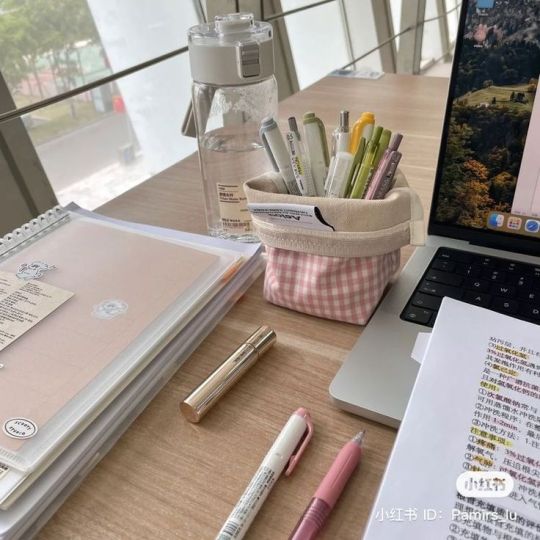



(don't mind the number formatting)
the neural bridging technique this is literally my favorite discovery!! instead of traditional note-taking, i create what i call "neural bridges" between different subjects. for example, when studying both literature + history, i connect historical events with the literature written during that time. i use a special notebook divided into sections where each page has two columns - one for each subject. the connections help you understand both subjects deeper + create stronger memory patterns!!
here's how i do it:
example:
left column: historical event
right column: literary connection
middle: draw connecting lines + add small insights
bottom: write how they influenced each other
the shadow expert method this changed everything for me!! i pretend i'm going to be interviewed as an expert on the topic i'm studying. i create potential interview questions + prepare detailed answers. but here's the twist - i record myself answering these questions in three different ways:
basic explanation (like i'm talking to a friend)
detailed analysis (like i'm teaching a class)
complex discussion (like i'm at a conference)
this forces you to understand the topic from multiple angles + helps you explain concepts in different ways!!
the reverse engineering study system instead of starting with the basics, i begin with the most complex example i can find and work backwards to understand the fundamentals. for example, in calculus, i start with a complicated equation + break it down into smaller parts until i reach the basic concepts.
my process looks like:
find the hardest example in the textbook
list every concept needed to understand it
create a concept map working backwards
study each component separately
rebuild the complex example step by step
the sensory anchoring technique this is seriously game-changing!! i associate different types of information with specific sensory experiences:
theoretical concepts - study while standing
factual information - sitting at my desk
problem-solving - walking slowly
memorization - gentle swaying
review - lying down
your body literally creates muscle memory associated with different types of learning!!
the metacognition mapping strategy i created this method where i track my understanding using what i call "clarity scores":
level 1: can recognize it
level 2: can explain it simply
level 3: can teach it
level 4: can apply it to new situations
level 5: can connect it to other topics
i keep a spreadsheet tracking my clarity levels for each topic + focus my study time on moving everything to level 5!!
the information architecture method instead of linear notes, i create what i call "knowledge buildings":
foundation: basic principles
first floor: key concepts
second floor: applications
top floor: advanced ideas
roof: real-world connections
each "floor" must be solid before moving up + i review from top to bottom weekly!!
the cognitive stamina training this is my absolute secret weapon!! i use a special interval system based on brain wave patterns:
32 minutes of focused study
8 minutes of active recall
16 minutes of teaching the material to my plushies
4 minutes of complete rest
the specific timing helps maintain peak mental performance + prevents study fatigue!!
the synthesis spiral evolution this method literally transformed how i retain information:
create main concept spirals
add branch spirals for subtopics
connect related concepts with colored lines
review by tracing the spiral paths
add new connections each study session
your notes evolve into a beautiful web of knowledge that grows with your understanding!!
these methods might seem different from typical study advice, but they're based on how our brains actually process + store information!! i developed these through lots of research + personal experimentation, and they've helped me maintain perfect grades while still having time for self-care, hobbies + fun!!
sending you the biggest hug + all my good study vibes!! remember that effective studying is about working with your brain, not against it <3
p.s. if you try any of these methods, please let me know how they work for you!! i love hearing about your study journeys!!
xoxo, mindy 🤍
glowettee hotline is still open, drop your dilemmas before the next advice post 💌: https://bit.ly/glowetteehotline

#study techniques#academic success#unconventional study methods#creative study tips#neural bridging#shadow expert method#reverse engineering study#sensory anchoring#effective studying#minimal study guide#glowettee#mindy#alternative learning#academic hacks#study inspiration#cognitive stamina#learning tips#study motivation#unique study strategies#self improvement#it girl energy#study tips#pink#becoming that girl#that girl#girlblogger#girl blogger#dream girl#studying#studyspo
176 notes
·
View notes
Text
Index to the Blatantly Partisan Party Reviews, 2025 federal edition
This Saturday, 3 May 2025, is federal election day in Australia. If you are unsure who all these parties are on your ballot, I’m here for you. I’ve reviewed all parties registered with the Australian Electoral Commission except for the most widely known ones: Labor, Greens, and the Liberal/National coalition parties. I have also reviewed the teal independents, a couple of unregistered parties who are endorsing independent candidacies, and two independent Senate candidates in Western Australia.
What you will find below: an index to all my reviews, a classification of parties by broad categories of recommendation, recommendations of other sites reviewing the parties, and some voting tips and advice. It should be obvious but these are my personal views and should not be construed as reflecting those of my employer or anyone else. I write from a left-wing perspective sympathetic to democratic socialism and green politics, mixed economies and urbanism. If you have even halfway similar political perspectives to me, I hope this might be useful. Please feel free to share with anybody whom you think will also be interested.
Index to all my reviews for 2025
Read the list below as: party name (ideology / where running). For the locations, a plain state abbreviation means the party is running a Senate ticket in this state; check with the AEC here to see if they also have a candidate in your electorate of the House of Representatives. A state abbreviation with an asterisk (*) indicates that in this state, the party is running only for an electorate or electorates in the House of Representatives; again, check the AEC here to see if it is yours. In some instances, though, I have listed the specific seat.
Animal Justice Party (animal rights / all states + ACT)
Australia First, who are unregistered (neo-Nazi scum / Division of Lindsay)
Australian Christians (Christian fundamentalism / NSW, WA)
Australian Citizens Party (conspiracy theorists / all states + NT)
Australian Democrats (centre-left / NSW*, QLD, VIC, WA)
Australia’s Voice (centre-left / NSW, QLD, SA, VIC, WA)
Centre Alliance (centrism / Division of Mayo)
Dai Le and Frank Carbone W.S.C. (centre-right / Division of Fowler)
David Pocock (green social liberalism / ACT)
Family First (Christian fundamentalism / ACT*, NSW, QLD, SA, VIC)
FUSION | Planet Rescue | Whistleblower Protection | Innovation (centre-left-ish hodgepodge / NSW, QLD, SA, VIC, WA)
Gerard Rennick People First (far-right cult of personality / NSW, QLD, SA, VIC, WA)
Good Party, who are unregistered (centre-left / Divisions of Kingsford-Smith and Page)
Great Australian Party (sovereign citizens / QLD, WA)
Health Environment Accountability Rights Transparency (HEART) (antivax far-right woo / ACT, NSW, QLD, VIC)
Indigenous–Aboriginal Party of Australia (Indigenous rights / NSW, NT*, QLD, VIC, WA*)
Jacqui Lambie Network (centre-right cult of personality / NSW, QLD, SA, TAS)
Katter’s Australian Party (right-wing cult of personality / QLD)
Legalise Cannabis Australia (single issue / all states + NT)
Libertarian Party (far-right libertarianism / all states and territories)
Pauline Hanson’s One Nation (xenophobic far-right populism / all states + NT)
Shooters, Fishers, and Farmers (anti-environmentalist gun nuts / NSW*, TAS, VIC)
Socialist Alliance (socialism / NSW, QLD, VIC*, WA)
Socialist Equality Party, who are unregistered (antisocial socialism for cantankerous people / NSW as Group B, VIC as Group G, and indies in seats of Calwell, Newcastle, Oxley)
Sustainable Australia–Universal Basic Income (anti-immigration NIMBYs / all states and territories)
Teal independents (centrism / assortment of lower-house seats in all states and territories)
Trumpet of Patriots (lunar right / all states)
Ungrouped independent candidates for the Senate in WA (right-wing or plain odd personalities who should receive a low preference)
Victorian Socialists (socialism / VIC)
Classification of all parties by broad category of recommendation
At the end of each review is a recommendation of how positively or negatively you should preference each party. Let’s see how all the parties have shaken out. Within each category, I am presenting parties alphabetically rather than suggesting an order for your preferences. I have written a separate entry on how I decide the ranking of unpalatable parties.
Good preference: David Pocock, Indigenous–Aboriginal Party of Australia, Socialist Alliance, Victorian Socialists
The parties above have a positive overall platform that has few or no significant flaws for the left-wing voter.
Decent to good preference: Australian Democrats; Australia’s Voice
The parties above have a positive overall platform, but I have minor reservations.
Decent preference: Animal Justice Party, Good Party, teal independents
The parties (or independents) above have a generally positive overall platform, but I have reservations.
Middling preference: Centre Alliance, Legalise Cannabis
The parties above have a balance of positive and negative qualities, or a decent platform undermined by a notably terrible policy or characteristic.
Note on Legalise Cannabis: middling is a generalisation as candidate quality varies. In Victoria, for instance, give Fiona Patten (lead Senate candidate) a decent to good preference; in Queensland, give Belinda Jones (lead Senate candidate) a weak preference.
Weak to middling preference: Dai Le & Frank Carbone W.S.C., Fusion Party, Jacqui Lambie Network, Socialist Equality Party, Sustainable Australia
The parties above are problematic, but better than what comes below.
Weak or no preference: Australia First, Australian Christians, Australian Citizens Party, Family First, Gerard Rennick People First, Great Australian Party, HEART, Katter’s Australian Party, Libertarian Party, One Nation, Shooters, Trumpet of Patriots
The parties above have more negatives than positives (usually many more!). In the House of Representatives, where you must give full preferences, put these parties as low as possible. In the Senate, I recommend you do likewise to maximise the potential power of your vote; but I recognise that some of you prefer not to express preferences between varying gradations of undesirability or prefer not to rank the most odious parties.
Other good reviewers
For further opinions, b_auspol has reviewed parties and independents contesting NSW, Kevin Bonham has summarised those contesting Tasmania, Notionoriety has concise left-wing overviews for QLD, NSW, and VIC, Anthony Zougras has overviews of all registered parties (more concise than me, less than Notionoriety), and Something for Cate is very comprehensive, with a Victorian emphasis, continuing the tradition of much-missed Cate Speaks.
Voting tips and advice
When you go to vote, you will receive two ballots. The smaller green one is for the House of Representatives, the lower house; whichever party/ies command a majority on the floor of the House forms government. You must number EVERY SQUARE on the small green ballot for the House. Many seats have independent candidates; make sure you look into them as they vary substantially in their platforms and competence.
The larger white ballot is for the Senate, the upper house. This is the house of review. We are voting for roughly half the Senate, as state senators serve six-year terms. This means each state elects six senators, requiring 14.3% of the vote to be elected; each territory elects just two (who serve terms aligned with the House), requiring 33.3% of the vote to be elected. On the Senate ballot you can vote above the line for PARTIES or below the line for INDIVIDUALS. Above the line you must give at least six preferences; below the line you must give at least twelve; beyond this point, you can do what you like. You can stop preferencing entirely or you give as many more preferences as you want. I strongly recommend you preference as far as possible because this increases the potential power of your vote.
If you want something more visual (and humorous), Patrick Alexander has two handy cartoon explainers: you can’t waste your vote for the House of Representatives and what’s the go with voting for the Senate?
If you want to vote below the line in the Senate, you can make your own custom how-to-vote card using Cluey Voter. It is the only site of which I am aware that allows you to construct a below-the-line vote (Donkey Votie and Build a Ballot can only make above-the-line cards). Print it off and take it into the booth with you! And do you need to find your nearest democracy sausage or cake stall? This website has you covered.
Happy voting everybody, and a delicious democracy sausage or sweet treat to one and all!
#auspol#ausvotes#ausvotes25#ausvotes2025#Australian election#Australia#Election 2025#voting#democracy#parliament#Australian parliament#political parties#minor parties#micro parties#independent candidates#independent politics#preferences#preferential voting#good preference#decent preference#middling preference#weak or no preference#Senate#House of Representatives#democracy sausage#vote vote vote#go vote
76 notes
·
View notes
Text
Divus Crewel Lesson Lines

HISTORY
Good
Morning
What a boring tale to start the morning with...
This is still fresh in my mind.
Oh, a thousand pardons. I didn't mean to yawn there...
Afternoon
This bit of history is beyond ancient.
I feel as though I could sleep soundly.
A boring class, don't you think?
Evening
Wow, what high praise.
During this era...
I'm reminded of how torturous this was way back when...
Great
Nothing worth bragging about.
Is this it?
This is just fundamental coursework.
This isn't anywhere near satisfying enough.
Perfect
Normal Lesson
Watch me, you might learn something.
Trein-sensei, is there a problem?
It's only natural that I would understand this.
This isn't even worth reviewing.
Special Lesson
I suppose I'll focus up a tad.
That will be on the exam.
Headmage, what did you even come here for?

FLYING
Good
Morning
Is this supposed to be a dog park?
Vargas-sensei, be quieter.
Tch, this broom is filthy.
Afternoon
This is just a light workout.
This thing won't go any faster.
Don't get too rowdy, you'll injure yourself.
Evening
Straighten your back.
Want me to show you how to do it?
This is nothing but a glorified dog race.
Great
This should be good enough.
Maneuvering a broom is much too simple.
I almost want to stick an engine on this thing.
The pickup speed isn't bad at all.
Perfect
Normal Lesson
Faster!
Can you keep up with me?
Now, it's time for walkies.
Did you think I would not be proficient at this?
Special Lesson
How did the Headmage fly through the air...?
This was a good change of pace.
Watch and learn, pups.

ALCHEMY
Good
Morning
How does it look?
Do it properly.
I'll try a different ingredient.
It will fail at that rate.
Keep the heat at an even temperature...
Afternoon
Don't just throw the ingredients in!
Make sure to do your proper grooming.
Good, it's starting to change.
Picture the completed concoction.
A fine man, if I do say so myself.
Evening
We need to ventilate.
Alchemy is not just about making gold.
There is a proper method to stirring.
Don't take the ingredients out from here.
Shall I show you how it's done?
Great
That professor has good sense.
Did you think I would fail?
Heh, I've done it.
Be more efficient.
This is the absolute basics of basics.
Perfect
Normal Lesson
Time to tidy up.
This is ideal.
I can reproduce it for you as many times as you need.
My recipe is perfect.
I could do this with my eyes closed.
Special Lesson
Try making something of this level.
Alchemy is spectacular.
Headmage, your coat has caught fire...
I should increase the difficulty of the recipe.
Now, this is alchemy.
#twisted wonderland#twst#divus crewel#twst divus#twst translation#mention: crowley#mention: trein#mention: vargas
384 notes
·
View notes
Text
Click Here To Learn Wine Basics - The Fundamentals Of Wine by: Daniel Golio
Ameri Wines by Domaine Bousquet
Today we introduce two new wines from Domaine Bousquet. We have written about Domaine Bousquet wines a few times before and have delved into the history and the story behind the wines. You can read our previous posts here, here, and here, to learn more about Domaine Bousquet and husband and wife owners, Labid al Ameri and Anne Bousquet. It is no small coincidence, in fact, no coincidence at all,…

View On WordPress
#Wine#Wine Blog#Wine Lovers#Wine Review#Wine Tasting#wine basics#wine books#fundamentals of wine#daniel golio
2 notes
·
View notes
Text
Ghost Wrote Rock History in Manchester – And This Is Just the Beginning
In my humble opinion, on April 15th, 2025, Ghost wrote new pages of rock history during the first show of their new Skeletour tour. They made history, carried out a kind of revolution, if you will. How and why, and what I’m even talking about here, might not be immediately clear.
Maybe it’s too soon. But the scope of what we witnessed yesterday—or rather, what we didn’t witness—could fundamentally change things and be a real game changer in the rock music business and rock culture in general. You can read the basic outline of what happened in Manchester in the text below or watch the video on our YouTube page. This is something people will be talking about for a long time…
April 15th, Manchester – Ghost did what most bands wouldn’t dare.
No phones allowed. You read that right. Zero. Nada. Locked away.
What happened? Magic. Real connection. Actual energy in the air.
People weren’t filming. They were feeling.
It was a gig like it used to be—sweaty, loud, eyes wide open.
Ghoulbangers Ball show on the hoirizon
No more crappy fan footage.
Live reviews mean something again.
Pro photos are gold now—rare, raw, powerful.
Fans walking out said they’d never felt anything like it.
This wasn’t just a concert. It was a f***ing reset.
Ghost made history last night.
And maybe—just maybe—the future of live music got saved.
Junkyard Stories
40 notes
·
View notes
Text
Crystal Theory: The Binding, The One, and Everything
Alright everyone, the time has finally come to step onto the slippery slope and delve into the depths of uncertainty and various interpretations. ¯\_(ツ)_/¯ Today we’re gonna break down the Crystals and everything connected to them. We’ll even talk about the Medulla Crystal, by the way.

Crawling through the tag, I see you guys like to tell each other scary stories, like the Medulla Crystal is made of - get this! - actual BRAIN. Talk about nightmare fuel! >:D
Also, while lurking on a foreign website, I stumbled upon a really interesting take that the Aerrow and Piper duo were destined to be, like, the messiahs in our favorite show (hey there, I know you’re reading this >:D).
But to me, there’s something missing in all of this, like we’re seeing everything but still missing something super important. And now we’re gonna try to figure out what exactly that important thing could have eluded us. Let’s go.
Review of Hints
So, if you’ve been paying attention to the show, you’re probably aware of all the basics, such as, for example, that crystals can possibly be manufactured (episode “The Masked Masher”). But that’s not enough, we need new information. Let’s try to extract it from the hints that Mr. Asaph Fipke so kindly provided us. Let’s review them.
Our first stop is the episode “The Black Gorge”. Let’s remember the plot: our heroes decided to fly over the Black Gorge, but “something” sucked the energy out of their crystals and they fell down. But Piper found a solution:

She launched the Condor using this crystal, since the Black Gorge doesn’t affect it for some reason. Let’s remember this, it’ll come in handy.
Our next stop is the episode “Storm Warning”. Again, let’s remember the plot: the heroes stole a box of Leech Crystals, which steal energy, from the Cyclonians, and they discharged the Condor’s crystals. However, Piper again saved the situation by telling Stork to get rid of the crystals.


As we can see, as soon as Stork put the crystals in the isolator, the energy miraculously fully restored, and the Condor was able to take off. Let’s remember this and move on.
Our next stop is in the episode “The Lesson”. Let’s carefully watch what Arygyn will do now:
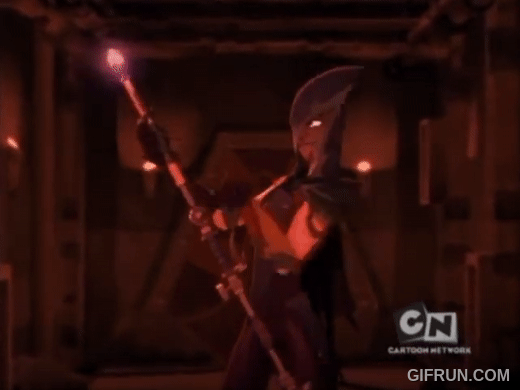
Let’s not get stuck on it, let’s remember it and move on.
Now let’s take a closer look at the episode “Five Days”. This time, there’s not much to comment on, it’s enough just to see it once:

Someone sees a glimmer of kindness in our beloved Master Cyclonis in this scene, while others quite reasonably ask: “who made that picture?” For us, it’s important that a photo can be stored in a crystal. Let’s remember this.
Our last stop is in the episode “The Key”. In this episode, we are introduced to the Binding.

We won’t dwell on them too much, just note that the abilities transferred through them are very reminiscent of the properties of some crystals. Let’s remember this and move on to the next step.
Fundamental Principle of How Crystals Work
So, let’s write down what we learned:
The Black Gorge somehow absorbs the energy of crystals, but does not affect the Solaris Crystal
If you drain the energy from crystals, and then remove the absorber, the energy of the crystals is immediately restored
Arygyn can turn off a crystal
Photos can be stored in crystals
Some abilities transmitted through Binding resemble the abilities of crystals
The inputs have been received. Now we can try to interpret them. I propose to do this with the following three postulates:
Postulate One: Information Can Be Stored in Crystals
This postulate is probably obvious, but its significance is far from obvious. For now, let’s focus on the fact that, in addition to photos, it should be possible to store, for example, a control program for a Suit of Untold Vengeance in a crystal.

Judging by the fact that the Medulla Crystal affects the user, we can assume that it is controlled using a neuro-interface, and the Medulla Crystal acts as a kind of “intermediary.” But that’s not important to us. Let’s move on to the next postulate:
Postulate Two: All Crystals, Without Exception, are Energy Receivers
Even the Solaris Crystal. It may sound crazy, but this assumption is fully consistent with what we see. If crystals receive energy from somewhere outside, then the miraculous restoration of energy after Stork hid the box in the isolator requires no explanation, and turning off in the Black Gorge can be compared to losing signal on a cell phone when you are outside the coverage area. However, the Solaris Crystal is still incomprehensible, as is the scene with Arygyn, so let’s move on to the final postulate:
Postulate Three: Binding is a Channel Through Which Crystals Receive Energy
So, the last postulate is quite straightforward. The scene with Arygyn should now become a little clearer, but the Solaris Crystal still requires explanation. Apparently, crystals are constantly and continuously in Binding, otherwise they would have turned off in the Black Gorge once and for all, as Arygyn seems to have done. However, in this case, we will have to assume that the analogy with cellular communication is not entirely correct, and in the “poor coverage area” the Binding simply weaken, but do not disappear completely. Weakening, they cannot provide the Condor’s take-off and the operation of the main systems, but are still able to maintain the Solaris Crystal in working order. The function of the Solaris Crystal is to accumulate solar energy; to store it, it uses the energy received from Binding. Most likely, there is not enough energy in one crystal to lift the Condor into the air, so the following explanation suggests itself: with the help of the energy accumulated by the Solaris Crystal, you can “strengthen” the weakened Binding. Apparently, this is exactly what Piper meant; in any case, this seems like a plausible explanation.
Binding and Information

According to the third postulate, this technique should be perceived as a temporary transformation of the user into a crystal. How exactly such a transformation occurs, I, unfortunately or fortunately, do not want to and will not explain, so let’s immediately move on to “unique” crystals, for example, this one:

According to the first postulate, to make this artifact, we need to record a “spell” - let’s call it that so as not to drown in the wilderness - of transforming an object into cheese in the crystal. This example is indicative, but other “unusual” crystals work in a similar way. We won’t dwell on them, let’s move on to the next point.
Source of energy
So, we assumed that crystals receive energy from somewhere outside. This entails the assumption that somewhere on Atmos there must be a source of energy for all crystals without exception. Drawing an analogy with cellular communication and, in principle, with radio waves, it is quite logical to assume that the source of all crystalline energy should resemble the TV towers and antennas familiar to us. Following this logic, the purpose of this structure becomes quite transparent:

Somewhere at this moment, an image of an incredibly advanced civilization may arise in your head, possibly reaching or very close to type 1 on the Kardashev scale, which built this transmitter to meet its energy needs. However, despite the fact that this conclusion seems logical, there are no explicit indications in the canon that this is the source of energy. With the same probability, it may be, for example, the core of the planet, and then the image of an incredibly advanced civilization will have to be seriously revised, and the purpose of this structure will remain a mystery. But whatever the source turns out to be in the end, our assumption leads us to a problem that we will now try to solve.
The One

In the episode “Origins”, this character claims that Piper is “the One”. The meaning of his words remains very, very vague to this day, but now we can try to assume what is behind them. First, you should ask an important question: since we assume that all crystalline energy is transmitted through Binding, then why are crystals needed at all on Atmos? You can just train “crystal mages” who will use Binding with the energy source, and no one will know grief. And so it turns out that this statement fits very conveniently into the picture of the world that we have just outlined. Thanks to it, we can assume that not just anyone is able to use Binding directly with the energy source, which is why they need crystals in order to be able to use this energy at all. Thus, I propose the following interpretation of these words: Piper is the primary crystal mage, that is, able to use Binding directly with the energy source. Master Cyclonis, in this case, will be a secondary crystal mage, that is, able to use Binding with crystals already connected to the source, but not directly to it. I believe this explanation is exhaustive, so we can move on to the final part of this analysis.
Piper’s Illness

Well, the moment has come to try to jump above our heads and stretch the facts to make our interpretations work on Atmos. Based on the third postulate, her illness can be explained as follows: Binding themselves are harmful to health, and their constant use will inevitably lead the user to such an outcome. However, Piper did not use Binding for 6 weeks and still got sick, and Cyclonis uses it like there’s no tomorrow and nothing happens to her from this. It is impossible to explain this just like that; we need a new entity. In order not to be completely unfounded, let’s try to derive it from these scenes:


We see that as soon as this aura covered Piper, she immediately felt better, and that Cyclonis clearly knows something that Piper doesn’t know (and doesn’t want to tell us). In order not to go beyond the third postulate, we will have to assume that secondary crystal mages, passing crystalline energy through themselves, cannot fully control it. Even after interrupting Binding, a residual charge remains in them, which, if not removed, will sooner or later bring any crystal mage to this state. Thus, I assume that Cyclonis, unlike Piper, knew that deactivation was needed to work with Binding. And in our case, Leech Crystals can act as deactivators. As for Piper’s healing, in that case we will have to assume that at this moment she used Binding directly with the energy source, thereby removing the residual charge. It sounds very doubtful, but there seems to be no better option…
So, I don’t think I’ve forgotten anything. If you’ve read this far and haven’t died of boredom, then congratulations. I do not claim to be the ultimate truth, just thoughts out loud.
Thank you all for your attention, bye.
38 notes
·
View notes
Text
The divorce of the White Raven was the chronicle of a foretold death
Now that the White Raven divorce officially begins tomorrow. I wanted to do a little review of why I've been looking forward to this moment for over 40 chapters and the delicious drama to come.
The chapters of Annabel and Lenore talking in the greenhouse are wonderful for many reasons, but mainly because they lay the groundwork for what the conflicts in their relationship will be from now on, simply put: these two just aren't on the same page.
Annabel wants to save them both, Lenore wants to save everyone.
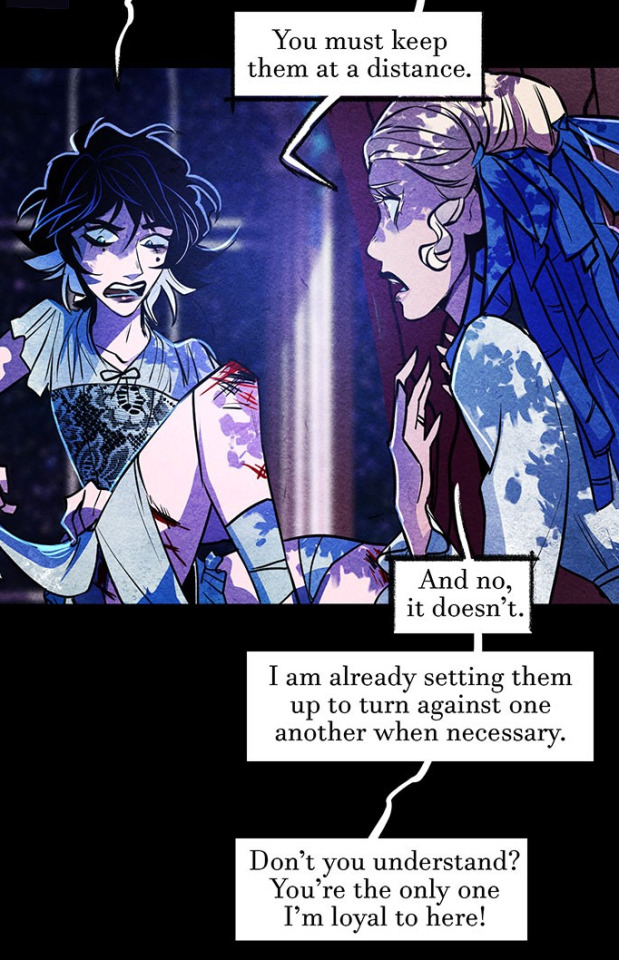

Annabel calls Lenore "my favorite," "my darling," and "my petal"; Lenore understands "my companion animal" (and Annabel doesn't bother to clarify).

Lenore says they are friends; Annabel clearly knows they were a couple.


Annabel tries to kiss her goodbye on the lips; Lenore kisses her hand.
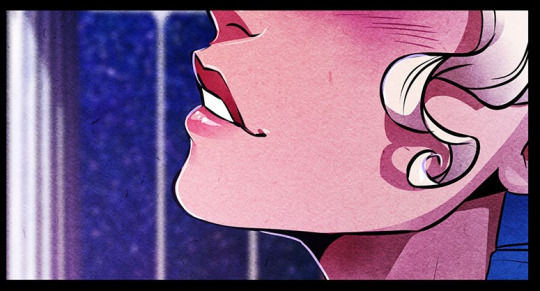

As the comic progresses -and especially with the last chapter released by the Freepass- the more fundamental root of this problem becomes more apparent: the White Raven don't really know each other, they think they do and, incidentally, insist on not listening to each other.
The Annabel Lenore Knows
The "disappointment rooms" are a Victorian myth (I say "myth" because there is no evidence that they were a widespread practice, although there are cases like Blanche Monnier's, they did not seem to be particularly common. But they exist in this comic, so they will be treated as real in this essay) were isolated rooms where a family member with a mental illness or physical deformity was kept isolated from the world, making him or her an outcast.
We don't know the real reasons why Annabel wanted to get close to Lenore (this scene make it clear that it was of her own free will, something Lenore knows), but anyway, this was extremely strange at the time, the kind of thing that could severely damage someone's reputation if it became public.
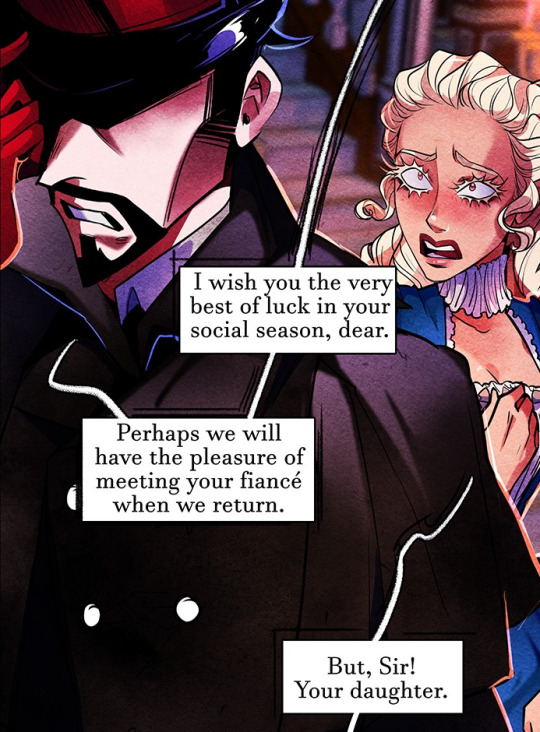

In other words, for Lenore, Annabel not only pulled her out of the spiral of madness she was in, made her feel alive again, and treated her like a person (something that hadn't happened since Theo's death); she also put her reputation on the line to get closer to "the crazy woman in the attic".
Add to that the fact that Annabel, like Lenore, is someone with an extremely protective personality, albeit in a much more subtle way: containing Lenore's outbursts by trying to distract her, complimenting her when she doubts herself, trying to give her a sense of purpose by asking her to write her a song, and automatically containing her own panic attack when she sees Lenore's horrified expression.


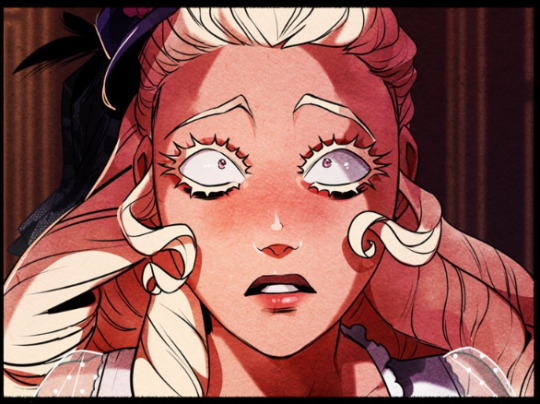
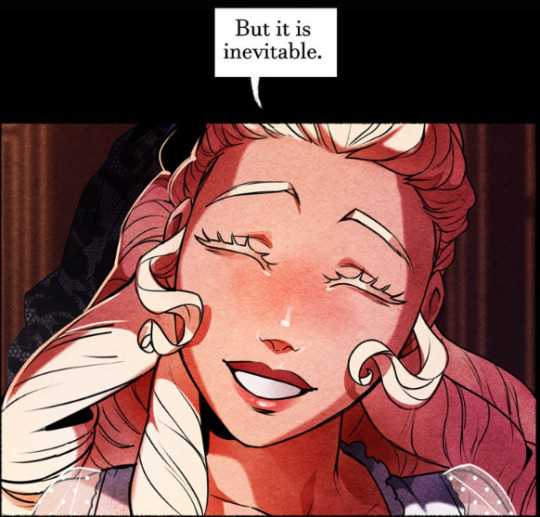
To Lenore, Annabel is someone who would rather destroy something that makes her happy and be hated than let Lenore suffer for her absence.
This is a gigantic contrast to the Annabel readers know, yes, the basics are there: she is seen to genuinely care about Prospero, and gratuitous violence against someone who cannot defend himself infuriates her. But Lenore does not dimension how Annabel's methods of survival (shaped by her trauma of not being heard, reasons why she machines her way through people) make her a Machiavellian, manipulative and cold-blooded person.
The last time Lenore saw Annabel in a situation where she could do nothing, she saw her give up. But readers know that this time, Annabel is willing to burn absolutely everything down to get them both out of it.
That is why the Duke affair takes her by surprise. Never mind that Annabel has said she's willing to destroy or trample anyone to get out of Nevermore. The Annabel Lenore knows would not be capable of that.
The Lenore Annabel knows
This part is more difficult to analyze, because unfortunately Annabel's memories are tied to big mysteries within the plot. On the plus side, this comic is excellent at dropping large amounts of information at the point of detail.
The most obvious: Annabel is carrying around the ring Lenore had when she burned down her house, in other words, "Leo's" charade worked so well that the two of them got engaged. In other words: Annabel has seen this woman burn down a family home (perhaps with servants inside), fake her own death, steal, take a continental trip, change her identity and pose as a man, all to save her from an arranged marriage.
A very "you and me against the world" situation. A scenario Lenore made possible by lying to basically everyone, even Annabel herself, who must have spent at least a few months believing Lenore was dead until "Leo" knocked on her door.
Add to that these two scenes: in the first, Annabel seems pretty convinced that Lenore has a good idea of what's going on here...
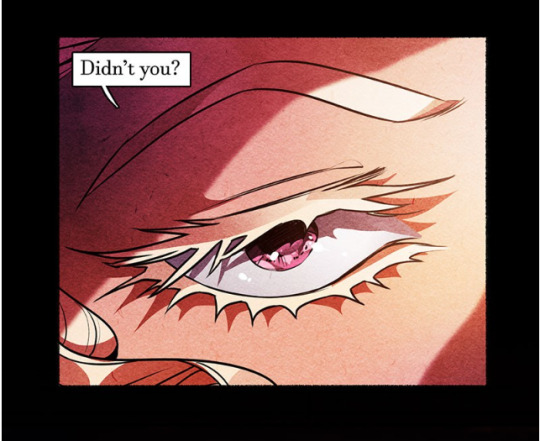
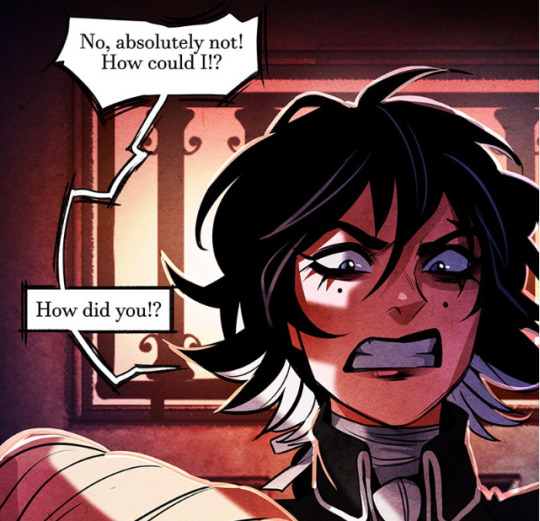
And in this one, Annabel thinks Lenore is doing this out of guilt.

Again, this is a huge contrast to the Lenore we readers have seen throughout the comic: a person who desperately wants to show others the affection and security that no one (except Theo and Annabel) has given her. A mix of a naturally vivacious and caring personality with traumas from which her need for control stems from anxiety and a terrible fear of abandonment.
In this light, Annabel putting Duke in danger to keep Montressor away from Lenore was something that was informed, known, and something that Lenore would agree with, because the Lenore she knows would be willing to sacrifice anything to achieve her goal.
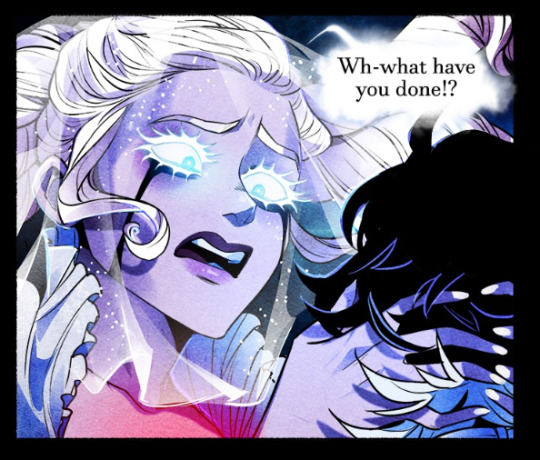

In that sense, that scene is foreshadowing. Not only did Lenore trick her into using a memory that Annabel does not have, but it comes right after Annabel confidently says that "no one knows Lenore better than she does.
The masks
One of the most painful tragedies of the White Raven relationship (besides the fact that it ended with both of them dead) is that one of the two has had to wear a mask on both sides of it: Annabel pretending that this relationship isn't as deeply ingrained in her as it really is, and then Lenore doing the whole "Leo" thing to be "the perfect fiancé" in everyone else's eyes.

Their divorce is imminent because both of them (especially Annabel) are projecting onto the other the expectations they have that are a product of the few memories they have been able to recover, rather than really looking at the person in front of them.
I'm going to enjoy all the beautiful character development that comes from here on out, because they both have a lot of unpacking to do separately from this divorce arc. And, I hope that, when they can finally reconcile, we also get to see how, for the first time in the history of their relationship, Annabel and Lenore can actually see eye to eye.
#annabel lee nevermore#annabel lee whitlock#lenore nevermore#lenore vandernacht#nevermore webtoon#white raven#lennabel#divorce arc#Appreciate the quality of the damn captures#Took me forever to get them
513 notes
·
View notes
Text
2024 Book Review #41 – Japan 1941: Countdown to Infamy by Eri Hotta

Almost everything I know about World War 2, I learned against my will through a poorly spent adolescence and reading people argue about it online. Living in Canada, Japan’s role in it is even more obscure, with the wars in the Pacific and China getting a fraction of a fraction of the official commemoration and pop culture interest of events in Europe. So I went into this book with a knowledge of only the vague generalities of Japanese politics in the ‘30s and ‘40s – from that baseline, this was a tremendously interesting and educational book, if at times more than a bit dry.
The book is a very finely detailed narrative of the internal deliberations within the Japanese government and the diplomatic negotiations with the USA through late 1940 and 1941, which ultimately culminate in the decision to attack Pearl Harbour and invade European colonies across the Pacific. It charts the (deeply dysfunctional) decision-making systems of the Imperial Japanese government and how bureaucratic politics, factional intrigue and positioning, and an endemic unwillingness to be the one to back down and eat your words, made a war with the USA first possible, then plausible, then seemingly inevitable. Throughout this, the book wears its thesis on its sleeve – that the war in the Pacific only ever seemed inevitable, that until the very last hour there was widespread understanding that the war would be near-unwinnable across the imperial government and military, but a broken political culture, the career suicide of being the one to endorse accepting American demands,, and a simple lack of courage or will among the doves, prevented anything from ever coming of it.
So I did know that Imperial Japan’s government had, let’s say, fundamental structural issues when I opened the book, but I really wasn’t aware of just how confused and byzantine the upper echelons of it were. Like if Brazil was about the executive committee – the army and navy ministries had entirely separate planning infrastructures from the actual general staffs, and all of them were basically silo’d off from the actual economic and industrial planning bureaucracy (despite the fact that the head of the Cabinet Planning Board was a retired general). All of which is important, because the real decisions of war and peace were made in liaison meetings with the prime minister, foreign minister, and both ministry and general staff of each branch – meetings which were often as not just opportunities for grandstanding and fighting over the budget. The surprise is less that they talked themselves into an unwinnable war and more that they decided on anything at all.
The issue, as Hotta frames it, is that there really wasn’t a single place the buck stopped – officially speaking, the civilian government and both branches of the military served the pleasure of the Emperor – whose theoretically absolute authority was contained by both his temperament and both custom and a whole court bureaucracy dedicated to making sure the prestige of the throne didn’t get mired in and discredited by the muck of politics. The entire Meiji Constitution was built around the presence of a clique of ‘imperial advisers’ who could borrow the emperor’s authority without being so restrained – but as your Ito Hirobumis and Yamagata Aritomos died off, no one with the same energy, authority and vision ever seems to have replaced them.
So you had momentous policy decisions presented as suggestions to the emperor who could agree and thus turn them into inviolable commands, and understood by the emperor as settled policy who would provide an apolitical rubber-stamp on. Which, combined with institutional cultures that strongly encouraged being a good soldier and not undercutting or hurting the image of your faction, led to a lot of people quietly waiting for someone else to stand up and make a scene for them (or just staying silent and wishing them well when they actually did).
Now, this is all perhaps a bit too convenient for many of the people involved – doubtless anyone sitting down and writing their memoirs in 1946 would feel like exaggerating their qualms about the war as much as they could possibly get away with. I feel like Hotta probably takes those post-war memoirs and interviews too much at face value in terms of people’s unstated inner feeling – but on the other hand, the bureaucratic records and participants’ notes preserved from the pivotal meetings themselves do seem to show a great deal of hesitation and factional doubletalk. Most surprisingly to me was the fact that Tojo (who I had the very vague impression was the closest thing to a Japanese Hitler/Mussolini there was) was actually chosen to lead a peace cabinet and find some 11th hour way to avert the war. Which in retrospect was an obviously terrible decision, but it was one he at least initially tried to follow through on.
If the book has a singular villain, it’s actually no Tojo (who is portrayed as, roughly, replacement-rate bad) but Prince Konoe, the prime minister who actually presided over Japan’s invasion of China abroad and slide into a militarized police state at home, who led the empire to the very brink of war with the United States before getting cold feet and resigning at the last possible moment to avoid the responsibility of either starting the war or of infuriating the military and destroying his own credibility by backing down and acceding to America’s demands. He’s portrayed as, not causing, but exacerbating
every one of Japan’s structural political issues through a mixture of cowardice and excellent survival instincts – he carefully avoided fights he might lose, even when that meant letting his foreign minister continue to sabotage negotiations he supported while he arranged support to cleanly remove him (let alone really pushing back on the army). At the same time, the initiatives he did commit were all things inspired by his deep fascination with Nazi Germany – the dissolution of partisan political parties and creation of an (aspirationally, anyway) totalitarian Imperial Rule Assistance Association, the creation of a real militarized police state, the heavy-handed efforts to create a more pure and patriotic culture. He’s hardly to blame for all of that, of course, but given that he was a civilian politician initially elected to curb military influence, his governments sure as hell didn’t help anything (and it is I suppose just memorably ironic that he’s the guy on the spot for many of the most military-dictatorship-e aspects of Japanese government).
One of the most striking things about the book is actually not even part of the main narrative but just the background context of how badly off Japan was even before they attacked the United States. I knew the invasion of China hadn’t exactly been going great, but ‘widespread rationing in major cities, tearing up wrought iron fencing in the nicest districts of the capital to use in war industry’ goes so much further than I had any sense of. The second Sino-Japanese War was the quintessential imperial adventure and war of choice, and also just literally beyond the material abilities of the state of Japan to sustain in conjunction with normal civilian life. You see how the American embargo on scrap metal and petroleum was seen as nearly an act of war in its own right. You also wonder even more how anyone could possibly have convinced themselves that an army that was already struggling to keep its soldiers fed could possibly win an entirely new war with the greatest industrial power on earth. Explaining which is of course the whole point of the book (they didn’t, in large part, but convinced themselves the Americans wouldn’t have the stomach for it and agree to a favourable peace quickly, or that Germany would conquer the UK and USSR and impose mediation on Japan’s terms, or-).
When trying to understand the decision-making process, I’m honestly reminded of nothing so much as the obsession with ‘credibility’ you see among many American foreign policy hands in the modern day. The idea that once something had been committed to – the (largely only extant on paper) alliance with Nazi Germany, the creation of a collaborator government in China to ‘negotiate’ with, the occupation of southern Vietnam – then, even if you agreed it hadn’t worked out and had probably been a terrible decision to begin with, reversing course without some sort of face-saving agreement or concession on the other side would shatter any image of strength and invite everyone else the world over to grab at what you have. The same applies just as much to internal politics, where admitting that your branch couldn’t see a way to victory in the proposed war was seen as basically surrendering the viciously fought over budget, no matter the actual opinions of your experts – the book includes anecdotes about both fleet admirals and the senior field marshal China privately tearing their respective superiors in Tokyo a (polite) new one for the bellicosity they did not believe themselves capable of following through on, but of course none of these sentiments were ever shared with anyone who might use them against the army/navy.
The book is very much a narrative of the highest levels of government, idea of mass sentiment and popular opinion are only really incidentally addressed. Which does make it come as a shock every time it’s mentioned that a particular negotiation was carried out in secret because someone got spooked by an ultranationalist assassination attempt the day before. I entirely believe that no one wanted to say as much, but I can’t help but feel that people’s unwillingness to forthrightly oppose further war owed something to all the radical actors floating around in the junior ranks of the officer corps who more than willing to take ‘decisive, heroic action’ against anyone in government trying to stab the war effort in the back. Which is something that the ever-increasing number of war dead in China (with attendant patriotic unwillingness to let them die ‘for nothing) and the way everyone kept trying to rally the public to the war effort with ever-more militaristic public rhetoric assuredly only made worse.
That same rhetoric also played its part in destroying the possibility of negotiations with the United States. The story of those negotiations runs throughout the book, and is basically one misunderstanding and failure to communicate after another. It at times verges on comedy. Just complete failure to model the political situation and diplomatic logic of the other party, on both sides (combined with a great and increasing degree of wishful thinking that e.g. letting the military occupy southern French Indochina as a concession for their buy-in on further negotiations would be fine with the Americans. A belief held on exactly zero evidence whatsoever). The United States government was actually quite keen to avoid a war in the pacific if possible, as FDR did his best to get entangled in Europe and effectively start an undeclared naval war with Germany – but the negotiating stance hardened as Japan seemed more and more aggressive and unreliable, which coincided exactly with Japan’s government taking the possibility of war seriously enough to actually try to negotiate. It’s the same old story of offering concessions and understanding that might have been agreed to a few months beforehand, but were now totally unacceptable. In the end, everyone pinned their hopes on a face-to-face diplomatic summit with FDR in Juneau, where sweeping concessions could be agreed to and the government’s credibility staked on somewhere the hardliners could not physically interfere with. The Americans, meanwhile, wanted some solid framework for what the agreement would be before the summit occurred, and so it never did.
After the war, it was apparently the general sentiment that the whole nation was responsible for the war with the United States – which is to say that no individual person deserved any special or specific blame. Hotta’s stated aim with the book is to show how that’s bullshit, how war was entirely avoidable, and it was only do to these small cliques of specific, named individuals that it began. The hardliners like Osami Nagano, but just as much the cowards, careerists and factional partisans like Konoe, Tojo, and (keeper of the Privy Seal) Kido. Having read it I, at least, am convinced.
127 notes
·
View notes
Text
TEXT Vol. 05 Jean’s Textbook
He’d gotten rid of as many of his belongings as possible when he joined the Survey Corps. There was no point in bringing anything like his jumbled collection of notes, and anything he did need he could buy or be issued. There was one item, however, that he kept in his bags because he’d need them to review the basics when understanding an operation.
“…My textbooks, huh. I guess I did leave them here.”
It had been some time since Jean last returned to his quarters. When he opened his bags in the personal space he’d been assigned, something moved him to pull the books out.
••••••
Around the time the old regime had been overthrown and Jean had met up with the main unit of the army…
Jean had been acting separately from the rest of the Survey Corps as a member of the “new Team Levi,” keeping him away from the main unit for some time. His bags had been haphazardly tidied up, just like those belonging to the rest of his squad. Now that much had been settled and he had returned, he needed to prepare next for the new operation to retake Wall Maria. When he unfastened his bag, he found a number of textbooks he’d used during his time in the Training Corps.
“I can’t believe I kept these …”
Even though he’d joined the Survey Corps and found himself in an ever-changing situation, he couldn’t allow himself to be negligent when it came to reviewing his fundamentals… And so he’d brought these books upon someone’s recommendation.
“A Guide to Marching Drills… What does this say about nighttime movement on horseback, again?”
One of these volumes seemed to be exactly the reference material he needed for the upcoming operation, and he casually began flipping through its pages.
••••••
[Seems like this appears on exams a lot.]
“…What’s this?”
The first handwritten words to jump out at him were not his own. These were marks left behind during a group study session for a written exam in his Training Corps days. Jean remembered sitting in the center of everyone, having placed his own textbook in the middle of the desk for them all to see and at times write in as they discussed this and that.
Jean couldn’t remember who the rushed cursive belonged to at first, but his memories of that day gradually began to return to him.
(Armin? No… If it was the person right next to me… I guess it’d be Marco.)
The words were written right-side-up on one side of the book. They’d been penned by someone reaching in from the side.
He shook his head at the memory of his close and now departed friend as he turned the page to find other writings.
••••••
“What’s this one say…?”
Jean couldn’t read the upside-down letters at first. He turned the book around, then gasped.
[Horses can move in other unpredictable ways. Be careful]
[—>Finger whistling, page 54]
The thick and powerful words of caution belonged to Reiner.
The thin and weak words that pinpointed Jean’s weaknesses and noted where he needed to read belonged to Bertolt.
Back then… they were comrades he learned alongside. In fact, it had been Reiner who suggested that he hold onto his textbooks. He had said that while Jean was talented, he had a tendency to rely on the fact. That’s why he needed to hold onto books that would let him go back to basics.
“…He really could see what’s most important.”
The contents of this textbook would have to be solidly in the minds of the two who were now on the “other side.” They would also know how the Corps would move by horseback according to it, too.
In other words… such was the opponent that now awaited them.
“The last ones I wanted to have to face went and became our enemies.”
…So this is what they meant when they said the world is a cruel place.
Jean quietly closed the book and placed it deep within his bags, as if to seal away the memories of the time he spent with the two.
••••••
SOURCE: Attack on Titan: Short Stories 3
TRANSLATION: Ko Ransom
#attack on titan short stories#shingeki no kyojin short stories#aot short stories#snk short stories#shingeki no kyojin au smartpass#attack on titan au smartpass#snk au smartpass#aot au smartpass#jean kirstein#reiner braun#bertholdt hoover#bertolt hoover
73 notes
·
View notes